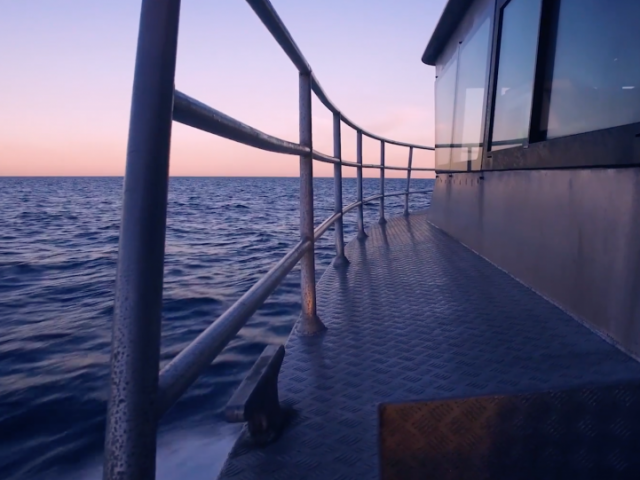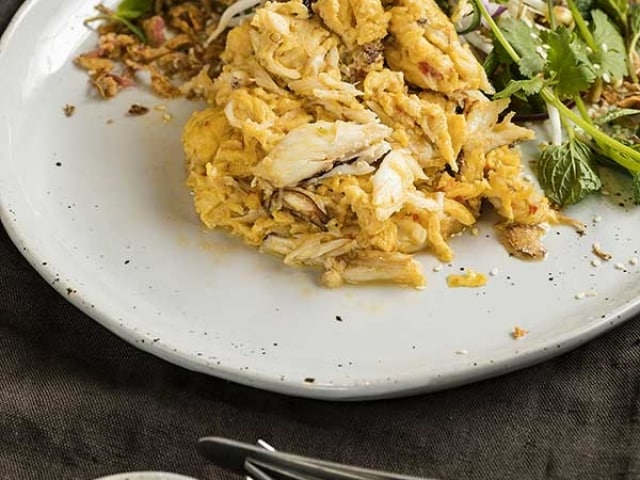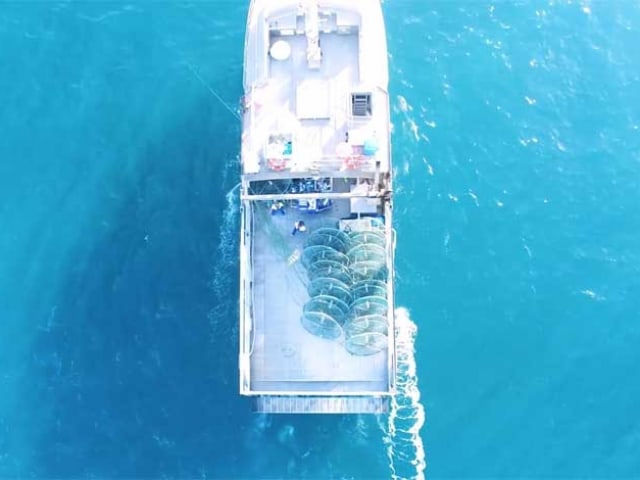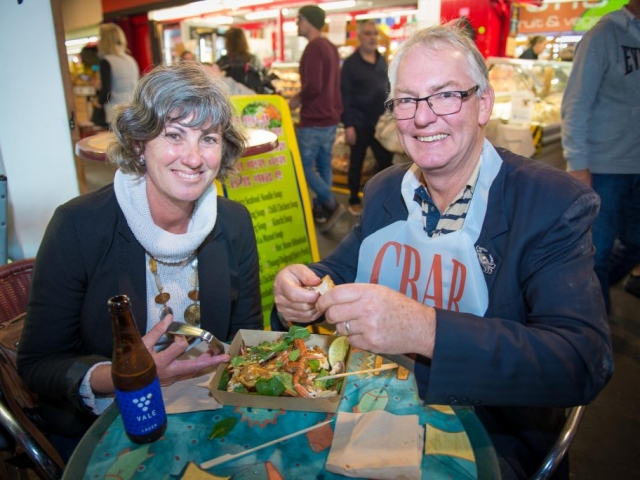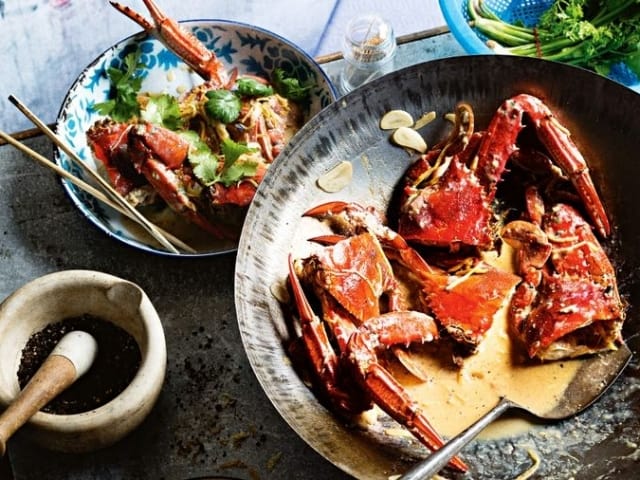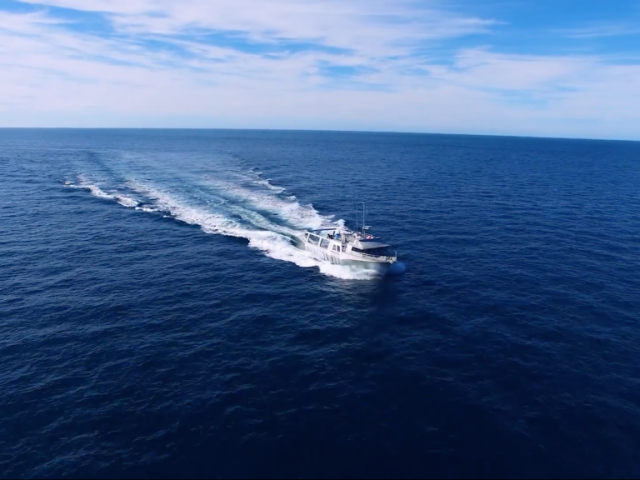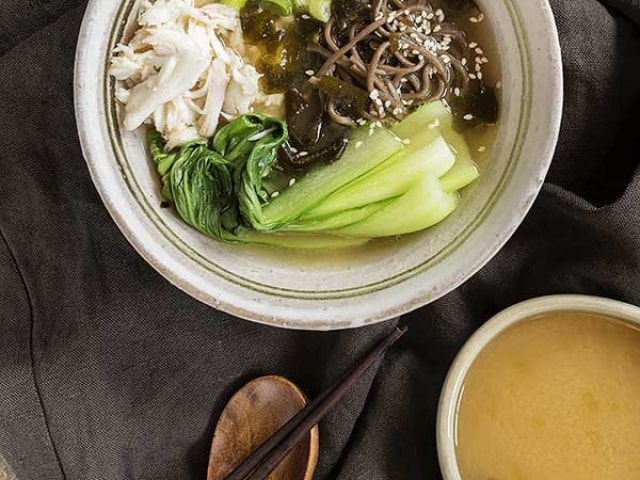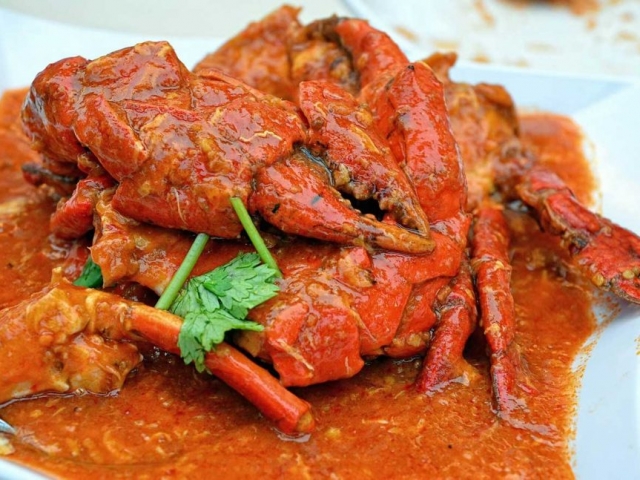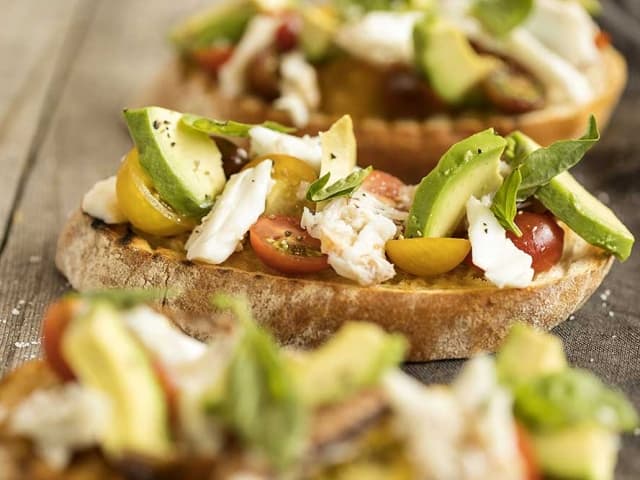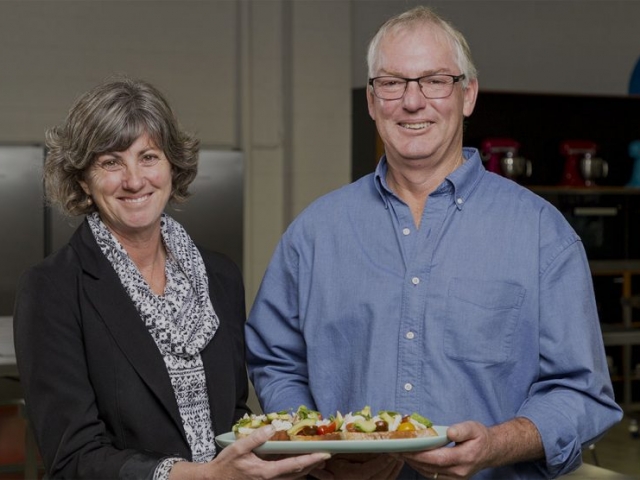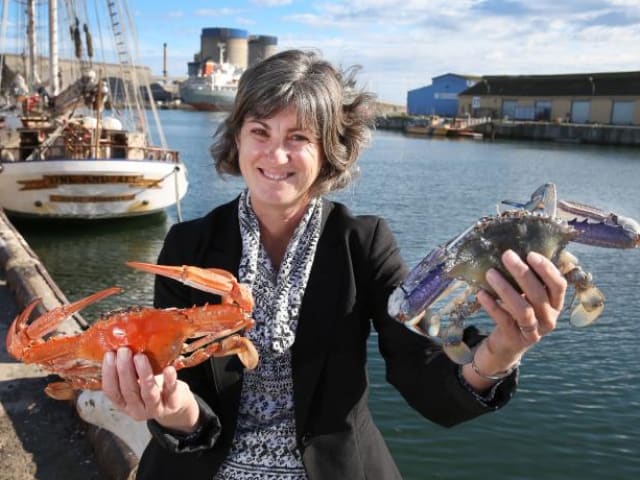History of the Blue Swimmer Crab Industry.
In the early days, prior to 1970, Blue Swimmer Crabs Portunus armatus were caught as by catch in the South Australian marine scalefish and prawn fisheries.
However by late 1970, the South Australian Department of Fisheries began to investigate the potential for a commercial Blue Swimmer Crab fishery. As a result of their investigation, the Department decided to trial an experimental Blue Swimmer Crab pot fishery. This experimental fishery was launched in 1983 through a call for expressions of interest from marine scalefish fishery licence holders who had at this time, been impacted by net closures in the upper Spencer Gulf.
In 1996 the commercial Blue Swimmer Crab pot fishery was born with a range of management and research strategies to maintain a sustainable and financially viable fishery. Access arrangements to the fishery were determined using historical catches and this saw a number of marine scalefish licence holders who had historically targeted Blue Swimmer Crabs in waters adjacent to the Yorke Peninsula using hoop and drop nets provided with access to this exciting new fishery.
Once the fishery was declared, it was divided into two zones that remain to this day in the Spencer Gulf and the Gulf St Vincent. Areas such as Upper Spencer Gulf, Whyalla, Port Broughton and Fishermen͛s Bay were not included in the access and still are not part of the fishery today.
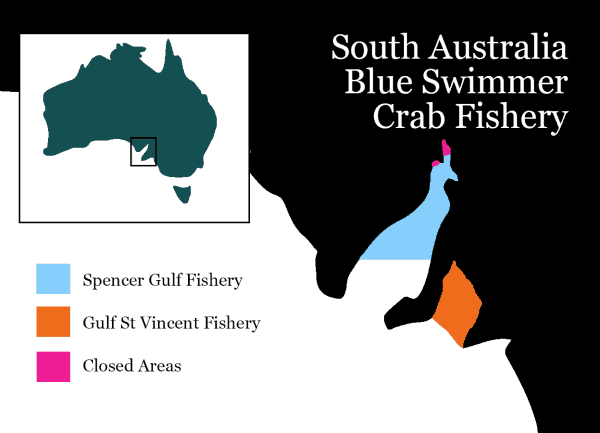
It was also at this time that the Individual Transferable Quota management system was put in place alongside what we know as the total allowable commercial catch (TACCs).
The TACCs were divided equally amongst licence holders in each of the zones. The TACC was initially set at 520 tonnes for the 1996 - 1997 fishing season. Over the next four seasons the TACC gradually increased until it reached 626.82 t in 2000 - 2001. Since then, the TACC has been set at 626.82 tonnes as the baseline commercial catch level for Blue Swimmer Crabs, with 245.15 tonnes allocated in the Gulf St Vincent and 381.67 tonnes in the Spencer Gulf.
Since 1997-1998, the total number of licences has decreased from 40 to 11. In 2016-2017 there were nine Blue Swimmer Crab fishery licences and two marine scalefish fishery licences with crab quota entitlements.
The South Australian Blue Swimmer Crab Industry Today.
Access to the Blue Swimmer Crab fishery is provided through a licence either as a stand alone license or through the marine scalefish fishery. Licences are endorsed with quota units for either the Gulf St Vincent zone or the Spencer Gulf zone.
Blue Swimmer Crab licence holders use crab pots to trap their catch and bait nets are also permitted to be used. Marine scalefish fishery licence holders are restricted to only using crab nets (i.e. hoop nets or drop nets).
The total catch of Blue Swimmer Crabs in the gulfs in South Australia has fluctuated over the years since 1996. There was an increase in catch from 469 tonnes in 2000-2001 to a peak of 625 tonnes in 2007-2008 but then it decreased to 511 tonnes in 2012-2013.
Today, the latest catch figures show 625 tonnes of Blue Swimmer Crabs were caught in 2015-2016 which was 30 per cent above that in 2001-2002 but the value has significantly increased from $3M in 2001-2002 to almost $7.1M in 2015- 2016
How the South Australian Blue Swimmer Crab Fishery is Managed.
Australia has one of the best managed fisheries in the world and South Australia is especially proud of its fishery, not just for Blue Swimmer Crabs but for every species commercially caught. As a result, management of this precious resource to ensure it is sustainable well into the future is taken very seriously by both government and the men and women of the Blue Swimmer Crab industry.
The Blue Swimmer Crab industry in South Australia is co-management which means that the responsibility for sustainable fisheries management is negotiated, shared and delegated at appropriate levels between government, the commercial fishing industry, recreational fishers, Aboriginal traditional fishers and other key stakeholders such as conservation groups.
The legislation in which the Blue Swimmer Crab industry is managed is via a piece of state legislation called the Fisheries Management Act 2007. The South Australian Blue Crab Pot Fishers Association Inc. is recognised as the representative industry body of the Blue Crab fishery and it is this body that the South Australian government consults with in regards day to day management of the fishery in accordance with the Act.
Currently the fishery is distributed as "shares" to a number of community groups. These shares are distributed as follows:
- Commercial (Blue Crab Fishery) – 65.5%
- Commercial (Marine Scale Fishery) – 4.5%
- Recreational 29%
- Traditional land owners –1%
These "shares" are not set in stone and can reallocated at any time in future. However, for this to happen the government has a strict process that must be followed that includes:
- A voluntary scheme of purchase of commercial quota units
- An incentive-based scheme whereby the commercial industry would be encourages to trade access to the resource
- Compulsory acquisition (which would include compensation to the commercial sector).
The first Management Plan for the South Australian Commercial Blue Crab Fishery under the Fisheries Management Act 2007 came into operation on 1 January 2012 with a second management plan currently in review planned to be endorsed by the South Australian government in 2018. These plans are critical for ensuring the commercial fishery complies with the Act.
Sustainability and Environment.
The Fisheries Management Act 2007
The Blue Swimmer Crab fishery in Australia and South Australia is managed through a piece of state legislation called the Fisheries Management Act 2007. This Act sets out how the fishery is to be allocated and managed. Importantly, the Act requires that all ecological impacts of the fishery be identified, assessed and monitored to ensure the health and sustainability ofit. The Act specifically requires that the following environmental impacts are identified: All currently known impacts of the fishery on the ecosystem Potential impacts of the fishery on the ecosystem Ecological factors that could have an impact on the performance of the fishery The fishery takes compliance with the Act very seriously. As a result, the South Australian Blue Swimmer Crab industry has identified its potential ecological impacts and has a suite of management strategies they are implementing to minimise these risks with a number of ways that its performance can be monitored, and successes recorded.
Environmental Sustainability
The South Australian Blue Swimmer Crab industry has set four goals, each with objectives to ensure the fishery͛s sustainability. This is a mandatory requirement identified in the Act that must be pursued to ensure responsible, ecological sustainable development.
The Blue Swimmer Crab industry's goals and objectives are:
1. Ensure the Blue Swimmer Crab resource is harvested within ecologically sustainable limits.
This goal is set in place to ensure that Blue Swimmer Crab stocks are harvested sustainably and that adequate data exists to prove this.
The main management strategies for ensuring sustainability of the fishery are restrictions on the total commercial catch each year through the quota system, bag and boat limits for recreational fishers, a minimum legal size limit and restrictions on taking crabs with eggs (berried females).
As the commercial sector accesses approximately 70% of the fishery each year, the industry has set objectives of:
- Maintaining the crab stock within sustainable limits in accordance with set performance indicators
- Collecting biological and environmental information to inform management decisions based on the performance indicators
2. Allocate access to Blue Swimmer Crab resources to achieve optimum utilisation and equitable distribution to the benefit of the community
This goal relates to the economic and social sustainability benefits derived from the fishery to optimise the use of the fishery in an equitable way, within the sustainability constraints of the fishery.
The fishery has set its objectives to achieving this goal through:
- Maintaining the stock at or above a level that will support commercial catch rates within the historical range
- Maintaining a flow of economic benefit from the fishery to the broader community
- Providing equitable public access and recreational fishing opportunities consistent with the allocated catch shares
- Recognising indigenous traditional fishing access
3. Minimise impacts on the ecosystem
This goal relates to the management of the fishery using what is referred to as an ecosystem-based fisheries management approach.
The South Australian Blue Swimmer Crab industry has set its objectives towards achieving this goal as:
- Minimising fishery impacts on bycatch species and the ecosystem
- Minimising the interaction with threatened, endangered and protected species
4. Cost effective and participative management of the fishery
This goal relates to co-management of the fishery, planning of management activities and the recovery of the costs of management of the fishery.
The key objectives of this goal for the industry are to ensure that the fishery has involvement in the decision-making processes for developing and implementing management arrangements and to ensure that management arrangements are complied with. Their objectives are:
- Provide cost-effective and efficient management of the fishery, in line with Government͛s cost recovery policy
- Ensure management arrangements reflect concerns and interests of the wider community
- Maximise compliance with management arrangements.
Harvest Strategy
The South Australian Blue Swimmer Crab industry has also developed a harvest strategy which aims to:
- Define operational objectives that are both biological and economic
- Define biological performance indicators that align to national status classifications
- Provide more explicit decision rules that link available biomass to exploitation
- Provide information and a process to transition towards utilising scientific information that is available in a timely manner.
The harvest strategy also aims to meet goals that relate to broader fisheries management policies for South Australian managed fisheries including:
- Minimising ecosystem impacts
- Maintaining the commercial catch within its allocated catch share
- Ensuring cost effective and participative management of the fishery
The industry also commits to the following to ensure that the Blue Swimmer Crab resource is harvested within ecologically sustainable limits:
- Gulf St Vincent - Maintain the legal size portion of the Blue Swimmer Crab biomass in fishery independent surveys in Gulf St. Vincent above the trigger of 0.8 kg/ pot lift and not less than the limit of 0.4 kg/pot lift
- Spencer Gulf - Maintain the legal size portion of the Blue Swimmer Crab biomass in fishery independent surveys in Spencer Gulf above the trigger of 1.7 kg/pot lift and not less than the limit of 0.7 kg/pot lift
Total Allowable Commercial Catch (TACC)
How many Blue Swimmer Crabs that can be harvested in South Australian waters is maintained by a system called the TACC which is reviewed annually. The way the TACCis set and managed (or adjusted) is monitored through a variety of methods which include:
1. Commercial logbooks – Crab fishers' catch and effort information forms the basis for decision-making in relation to the biology of the fishery. Daily catch and effort returns are completed and submitted monthly by registered masters in accordance with the regulations. The sorts of information recorded by fishers include fishing block, depth, effort, catch weight and catch abundance.
The logbook system is also used to collect biological data, including the number of undersized crabs, berried females (females carrying eggs) and the sex-ratio of the catch.
All licences holders in South Australian commercial fisheries are also required to record all interactions with threatened, endangered and protected species using a 'wildlife interaction' logbook.
2. Voluntary daily pot sampling data - The aim of pot sampling is to collect fishery-dependent data on abundance and size composition throughout the fishing season to complement Fishery-Independent Survey data on recruitment strength and sex-ratio.
Pot sampling data have been collected since May 2006 in Spencer Gulf and since July 2006 in Gulf St Vincent. Sampling is undertaken from one or two small mesh pots and one commercial pot each fishing day.
3. Fishery-Independent Survey Data - Fishery-independent surveys for the Blue Swimmer Crab fishery are conducted on an annual basis during June/July. This data has been collected since 2002. The primary aim of the survey is to collect data on the spatial abundance and size composition of Blue Swimmer Crabs in Spencer Gulf and Gulf St Vincent during winter, when juvenile crabs generally recruit to the fishery. Every three years fishery independent surveys will guide the TACCs and the number of fishing licenses that can be maintained.
4. Issue of licences - Access to the commercial Blue Swimmer Crab fishery is provided via a licence, either through the Blue Crab fishery or the marine scalefish fishery. Licences are endorsed with quota units for either the Gulf St Vincent zone or Spencer Gulf zone and last for a period of five years.
In 2016-2017 there were nine Blue Swimmer Crab fishery licences - four licences with quota entitlements for the Gulf St Vincent zone, and five licences with quota entitlements for the Spencer Gulf zone. In 2016 -2017 there was one marine scalefish fishery licence with quota entitlements for the Gulf St Vincent zone and one with quota entitlements for the Spencer Gulf zone.
Blue Crab Fishery licences and quota entitlements are fully transferable. Quota units may also be transferred between Blue Crab fishery and the marine scalefish fishery licences. A maximum of five masters (fishers) may be registered on a Blue Crab Fishery licence at any one time. The number of boats that may be registered on a Blue Crab Fishery licence at any one time is not restricted; however, only one boat may fish pursuant to a Blue Crab Fishery licence at any one time.
5. Registered devices - Blue Swimmer Crab fishery licence holders use crab pots to trap their catch. Crab pots used by the commercial fishery must have a maximum diameter of 2 m, and height of up to 65 cm, and minimum mesh size of 75 mm.
The total number of pots each Blue Crab Fishery licence holder may use is directly related to the number of quota units endorsed on the licence. This pot to quota unit ratio may vary between areas. Currently one pot may be used for every 10 quota units in Spencer Gulf and Gulf St Vincent.
6. Fishing Closures – License holders must adhere to strict set fishing closures which for the Gulf St Vincent is from the 1st November to the 16th January and for the Spencer Gulf, the 21st December to the 20th February. These closures are set in line with Blue Swimmer Crab breeding season.

